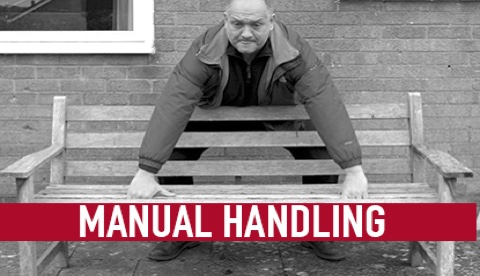When it comes to food safety, there are a few main factors you have control over in preventing the risk of food poisoning/ foodborne illness. One of these factors is temperature control; making sure your food is not served or consumed when in the danger zone temperature for food.
What is the food temperature danger zone?
The danger zone for food defines the temperature range where food is most in danger of producing harmful bacteria, which, when consumed, can cause illness to people that both handle and eat it. Leaving food at room temperature for too long can result in unsafe levels of bacteria growth.
The Food Standards Agency (FSA) sets the danger zone between 8 °C and 60 °C. This is the temperature range you want to ensure your food is out of. This implies that food is at its safest when it is frozen/ chilled to a temperature below 8 °C, or cooked/heated to a temperature higher than 60 °C.
However, the FSA recommends cooking or heating thoroughly to 70 °C. At 60°C, the bacteria deteriorate and begin to die. However, to better eliminate the bacteria, you need both temperature and time. Heating or cooking food to 70°C will decrease the time it takes the bacteria to die. Time and temperature are both significant because proteins need to be heated up for a long enough time for them all to be broken down.
Bacteria are happiest when it is warm. The optimum temperature for bacterial growth is 37°C – the same temperature as the human body. Fortunately, regulating the food temperature is easy to do. However, you must think about the storage of food items and how they are prepared before being consumed.

How to keep food out of the temperature danger zone
Harmful bacteria reproduce at an enormously fast speed between 8°C and 60°C. So much so, that restaurant food safety supervisors and government regulators have introduced measures to guarantee food consumed by the public will always sit outside of the food temperature danger zone.
Reheating leftover food
Food should be reheated to a minimal internal temperature of 70°C before consumption. Some foods aren’t always safe to be reheated, therefore its important to educate yourself on which foods are suitable and which aren’t, as you could be exposing yourself to dangerous bacteria and toxins. Some general rules for reheating leftover food.
- Use up your fridge leftovers within two days
- If you’re taking leftovers from the freezer, eat within 24 hours
- Don’t reheat leftovers more than once
- Food should be heated until it reaches and maintains 70°C or above for two minutes
Defrosting food
If food is not defrosted safely, it can encourage harmful bacteria to grow, increasing the risk of foodborne illness. According to numerous local authorities, storing and defrosting foods incorrectly are some of the major causes of food poisoning.
Several foods can be cooked straight from frozen without requiring to be defrosted first, e.g. oven chips, vegetables and ready meals. Nevertheless, this isn’t the case for all foods, and some will need to be defrosted completely and safely before cooking. Some examples of these types of frozen foods are:
- Poultry, e.g. chicken, turkey, duck and goose.
- Meat, e.g. pork, ham, beef and lamb, and processed meat goods, such as mince, sausages and burgers.
- Fish and seafood.
- Some foods cooked before freezing, e.g. lasagne and chilli con carne.
To minimise the risk of food poisoning from incorrectly defrosting food, you should always ensure that food that requires freezing is frozen properly and then defrosted using one of these methods:
- The refrigerator
- Cold water
- Microwave

Chilling food properly
Chilling food correctly helps to stop harmful bacteria from growing. To keep your food safe:
- Store dairy products, cooked dishes, and food with a use-by date in the fridge (5°C or below)
- Before preparation/cooking, attempt to keep the chilled food out of the fridge for the shortest time possible
- After cooking food, cool for one to two hours (maximum) before putting in the fridge
- Follow instructions on the external packaging, including the best before/ use by dates
As stated above, your fridge should always be at a temperature of 5°C or below. You should never overfill the fridge as leaving space between products lets the cold air circulate and maintains the desired temperature.
Learn more about the danger zone temperature for food in our online course
The Food Standards Agency states that: “Food business operators are required by law, to ensure that food handlers receive appropriate supervision and instruction/training in food hygiene in line with their work activity and should enable them to handle food safely.” Our Food Safety training course covers the key areas required to meet the training needs of those working with food.
Who is the Food Safety Level 2 course for?
Anyone who works in the preparation of food including those who work part-time, on a temporary basis or seasonally. Level 1 is appropriate for those who do not handle food, Level 3 for managers within catering operations.
This Online Food Safety Level 2 course is important to your health and that of your customers. No-one wins if the trainee isn’t concentrating. Shout Out Safety courses are entertaining exactly because we’re serious about Health & Safety training. Learning is more effective when people are engaged.
About the course
This CPD accredited course is in 4 sections which cover the following topics:
- What we mean by Food Safety
- How bacteria multiplies and creates a threat
- The health implications of poor hygiene
- Cross-contamination and how to avoid it
- Personal Responsibilities in the workplace
- Cleaning, Cooking and Chilling
There are 4 banks of questions which you will need to answer. Achieve the passmark and you’ll be able to move onto the next section. You can watch each section as often as you like but you can’t fast-forward.







